
There is no meltdown
January 25, 2015There is no meltdown, anything is under tight control, Glory to Ukraine, Glory to the heroes.
Ukrainian President Petro Poroshenko will not sell his Channel 5 TV, and also none of his other companies. It is always good, when the president owns one of the big TV broadcasters, so that the population is informed first hand about the political intentions of the government.
Channel 5 emerged as one of the popular news sources in the country a decade ago, when it zealously supported the Orange Revolution of 2004. Since then it has been the megaphone of pro-Western interest groups and it was the most important mass medium of the Maidan movement.
Dunja Mijatovic, the top official for media freedom at the OSCE, voiced concerns: “It is my firm view that elected politicians should not own and control media outlets in their country.”
And further:
“As the media freedom representative of a security organization it is my responsibility to warn the OSCE participating states of the severity of the media freedom situation in Ukraine. It will have serious repercussions on the human rights situation in the country unless substantial international efforts are initiated to reverse this trend.”
Ukrainian authorities obviously disagree with the OSCE official, they have their own ideas about media freedom and act correspondingly and decisively. For example:
Radio Vesti was denied the right to broadcast because, according to the National Council for TV and Radio: A talk radio broadcasting format is not needed in the concerned regions, and musical entertainment is enough. Searches and seizures have been conducted repeatedly at the Vesti newspaper. In September, the SBU (Ukrainian Security Service) accused the paper of violating the territorial integrity of the Ukraine.
Other examples:
In Kharkov on January 10 people in balaclavas threw Molotov cocktails through the broken windows of the Slavyanka newspaper. The editor reported: “Earlier we were already called and threatened. It was demanded, that we ceased to issue the newspaper.”
In June 2014, journalist Sergei Dolgov was abducted by unknown assailants in Mariupol from the offices of the newspaper which he edited, Хочу в СССР (I want to be in the USSR). Despite the efforts of his wife Olga and of international organizations, the fate of the missing editor is still unknown and it is assumed that he has been killed. His wife alleges that Dolgov was kidnapped in a mopping-up operation, carried out by neo-Nazi troops sent to Mariupol by Kiev authorities.
When the Espresso TV channel did broadcast Russian President Putin’s address to parliament on December 4 it received a warning that it is obliged in future to “prevent such violations” and the National Council initiated a review on the subject of incitement to hatred, insulting the country or its citizens.
In August, Kiev declared 49 Russian journalists persona non grata, including the head of Russia Today Dmitry Kiselev. A month earlier, the SBU opened a criminal case against Kiselev, suspecting him of “terrorist financing.”
Russian journalist Yevgeny Kiselyov, who had his own TV program on Inter TV and a permanent Ukrainian residency permit, was deported in October. The ICTV channel had to stop the Russian series “The Agent of National Security,” starring Mikhail Porechenkov, one of the top-rated Russian actors.
A correspondent and a camera operator of Russia’s LifeNews TV channel, Elizaveta Khramtsova and Natalia Kalysheva, were detained in Kiev and deported after a four hour interrogation.
When TV channel Inter, one of the four big Ukrainian broadcasters, aired the music show of a Russian TV company on New Years eve, it came under heavy criticism and had to cancel the broadcasting of several earlier announced Russian-made programs and own productions (all concerts and musicals) with Russian artists following threats to strip it of its license.
The SBU has put many popular Russian artists on a wanted list, including singer Iosif Kobzon and actors Mikhail Porechenkov, Ivan Okhlobystin, and Alexey Panin. Until now they were only banned from entering Ukraine, because they were included in a black list of hundreds of Russian artists, which the Ukrainian government approved in October.
Opposition fanzines and magazines have seized to exist, because if anything disliked by the authorities is published, the paper becomes dangerous to its subscribers who can be traced through post offices and then blacklisted.
Ukrainian authorities are mulling quotas for books and other printed products in the Russian language, citing national security consideration. Deputy Prime Minister Alexander Sych: “Quite obviously, in the future we’ll devise a mechanism of issuing quotas for printed products … it’s important for us today to restore information security — the security of values, lifestyle, culture, and mentality … we’re not interested in being another Russia, we’re interested in being a different type of a country.”
Russian-speaking organizations in the Ukraine have no chance to express their opinion in the Ukrainian media or via their own publications. Sergey Provatorov, coordinator of the Council of Russian compatriots: “We have problems with print shops; because of the recent developments the print shops’ staff are afraid to publish our editions.”
Provatorov continues: “Talking about Russia has become dangerous in Ukraine, especially on everyday problems, which is even more dangerous than talking in a political sense. We cannot talk in a taxi now; first, one has to find out what the driver’s position is. Many try to avoid any discussion of the situation in the country altogether.”
There is no political meltdown
Much what is going on in the Ukraine looks surreal to outside observers, especially in the area of politics and economics. One has to concede though that Ukrainian politics are maybe in fact not much more surreal and delusional than the politics of Brussels, where the ECB (European Central Bank) just announced a 1.14 trillion Euros quantitative-easing program, a giant money-grab which will only enrich CEOs and big shareholders at the cost of ordinary people.
The difference between the surrealism of Brussels or Washington or other political centers to the surrealism of Kiev is first, that the Ukrainians are delusional in their own, special slavic way, and second, that the Ukrainian population in the years since independence has been already fleeced so sorely by the oligarchs that one has to squeeze really hard to extract some more hryvnia from them.
But maybe it can be done nevertheless with some novel and innovative measures, for instance by fanning nationalist flames and hatred against Russians.
As the oligarchs know very well that in the Ukraine not much more money can be extracted they have to look for other sources, and at the moment they try to tap international funds.
The new minister for economy, Mr. Abromavicius, knows that the country is bankrupt. “To expect that we are going to produce real as opposed to declarative incentive programs is unrealistic,” he declared, meaning that the new Ukrainian budget is nothing but a piece of paper, written and passed with the only reason to get new money from the ECB and the IMF.
Yet, in Europe Ukraine fatigue has set in and nobody knows what to do with the zombie state to the east of Poland whose interaction with the West consists of incessant begging for money, weapons, and sanctions against Russia, while failing to offer any financial benefit for its Western “benefactors.”
As the money is not easily forthcoming Ukrainian leader present themselves as victims of Russian aggression and as a bulwark against Russian expansionisms, hoping that they will become an indispensable part of NATO’s strategy against Russia.
The USA is certainly interested to use the Ukraine for grinding down Russian economic and military strength but it clearly expects the Europeans to pay the bill. Which makes Ukrainians angry.
Anton Geraschenko, advisor and spokesperson to the minister for internal affairs vented on Facebook his frustration at Mr. Obama for not giving Ukraine money on the scale of the Marshall Plan or the aid packages to rebuild Japan after WWII or South Korea after the Korean War. In the words of Mr. Geraschenko: George Soros (with his 50 billion US$ plan) is “flying high like an eagle over the pettiness of Obama and other political dwarfs.”
Lately and ultimately, because “large-scale economical assistance” is not easily forthcoming, Ukrainian politicians have decided to double down on the war effort and create an even more terrible train wreck, hoping that this will finally open the Wests cornucopia.
Aleksandr Turchinov, head of the Committee of National Security and Defense, visited Kharkov to announce that the city is undergoing “counter-terror preparations” in order to prevent any signs of separatism.
Turchinov’s program includes the establishment of fortified checkpoints on all roads to Kharkov and National Guard posts at 42 strategic facilities. Armored vehicles will be stationed at these facilities or near them. Patrols and posts will involve approximately 2,400 troops.
At the same time Kharkov sees growing neo-Nazi activities by nationalists who organize marches and riots to intimidate and frighten the locals. The neo-Nazis’ displeasure was provoked by Kharkov mayor Kernes’ refusal to finance the defense of Kharkov at the expense of the city budget.
Kharkov SBU (Ukrainian Security Service) broke up the Iskhod community organization. Its leader Oleg Novikov was arrested and accused of collusion with terrorism.
From a military strategic point of view Kharkov is a logical target in a Novorussian offensive.
The Kharkov region is adjacent to Russia and military material can be easily supplied across the border. It is also covered by Russia’s air defense system. Kharkov is the location of the huge Malyshev tank construction plant and the Kharkov armored vehicle repair plant, which both at the moment work full steam for the Ukrainian military.
In Kiev, according to leaked information, the fractions close to Turchinov and Yatsenyuk, with direct support from the US State Department are organizing a “Narodnoye Veche” (Popular Assembly), which will gather at the initiative of the Council of Maidan. It is intended that during the meeting a vote of no confidence will be passed against President Petro Poroshenko.
Prime Minister Yatsenyuk is trying to use the growing frustration against Poroshenko to strengthen his own position, and he instructed supporters from the People’s Front to meet with leaders of trade unions and discuss the future direction of protests.
Heads keep rolling in the turf battles and scapegoat hunts, a lot of unexperienced people get lifted into influential positions where they have ample opportunity to prove their incompetence and ignorance.
Poroshenko gave a preliminary agreement to dismiss Prosecutor General Yarema (Ihor Kolomoisky gathering 120 Rada deputy signatures for that) and to discuss dismissing General Staff chief Muzhenko.
Something is brewing in Dnepropetrovsk, the base of oligarch Ihor Kolomoisky. Recently the pages of Boris Filatov (right hand of Kolomoisky) disappeared from social networks. At the same time rumors were spread that Kolomoisky is exiting the game in Ukraine and moving back to Switzerland.
There are speculations that this is a smokescreen to conceal preparations for a coup in Kiev. A powerful military formation, consisting of foreign military battalions with a leadership of NATO specialists is in the final stages of preparation.
One could Kolomoisky’s financial support for mercenary formations like the punitive battalions Azov and Adair also interpret as a form of protection money to make sure his businesses are left untouched. It will be interesting to find out which theory in the end was right.
Prime Minister Arseniy Yatsenyuk seems to favor Kolomoisky and will most likely participate in a coup.
On January 13 the Verkhovna Rada adopted amendments to the law on joint stock companies which deprived Kolomoisky of control over the company PJSC Ukrnafta. President Poroshenko cancelled a scheduled visit to the city of Dnepropetrovsk, “due to the difficult weather conditions.”
Minister Abromavichus signed the Ministry of Economic Development Decree No. 39/27 from January 22 that prohibits enterprises owned by Kolomoyskiy and Firtash to participate in bidding for government properties/services scheduled to be privatized.
There is no economic meltdown
Ukraine’s economic troubles didn’t start with Maidan, but with the breakup of the Soviet Union and the rise of the oligarchs in a free wheeling capitalist economy. Per capita GDP (gross domestic product) fell sharply in the first 10 years of independence and in 1999 was less than half of per capita GDP before independence. GDP started to grow slowly from then but never reached Soviet era proportions.
The true state of Ukrainians economy is hard to gauche because at least 40 percent of it is informal (shadow economy), but one can say with some certainty that Ukraine’s economy in 2014 shrank at least 7.4 percent (some reports speak of 8 percent and more). It is predicted to shrink another 6 percent in 2015 (in the most optimistic scenario).
The financial situation is easier to measure: In 2014 Ukraine’s currency, the hryvnia fell 48 percent against the US$, inflation was 24.9 percent and Valeria Gontareva, governor of the central bank, predicted that inflation in 2015 will be 17 to 18 percent. Gontareva also stated, that Ukraine is facing a “full-blown financial crisis” and that the banking system is “non-functioning.”
Lately Valeria Gontareva disclosed that Kiev will default on repayment of its sovereign bonds unless there is an immediate agreement from the US-based Franklin Templeton group and other bondholders to accept a moratorium on their coupon payments and postponement of bond maturities for several years.
Valeria Gontareva is one of the more realistic and honest officials in Kiev, maybe that is the reason why a Kiev district court has ordered prosecutors to investigate Gontareva’s currency interventions for alleged corruption.
In 2015, the central bank will close between 30 and 70 banking organizations (Bill No. 1564, Measures to Capitalize and Restructure Banks).
The central bank has spent 8.6 billion US$ of its reserves, which have fallen to their lowest level in more than a decade, to help state gas utility NAK (Naftogaz Ukrainy) pay debt for deliveries from Russian gas export company Gazprom.
Ukraine has 14 billion US$ of principal and interest payments coming due in 2015 on foreign and domestic debt (including a 3 billion US$ bond from Russia) and 10.2 billion US$ of liabilities in 2016.
Ukraine’s external debt (private and government combined) has risen from 40 billion US$ in 2005 to 140 billion US$ in 2014, though some experts say that it could be up to 180 billion US$. Wether it is 140 or 180 billion, this amount of money can never realistically paid back. Much of the debt is owed to European banks and bond holders (France, Austria, Russia, Hungary, Italy, Germany, Netherlands), but Franklin Templeton, the global asset group, also holds 7.4 billion US$ of Ukrainian bonds.
Rating agency Moody’s estimated that Ukraine’s debt amounted to 72 percent of GDP in 2014 and would rise to 83 percent in 2015. It also said “the risk of default is rising”
According to Moody’s the country will need an extra 15 to 20 billion US$ of funding on top of the existing 17 billion US$ IMF/EU program to stay afloat.
The country’s July 2017 notes are trading around 60 cents on the dollar, extending a record monthly selloff in December. Ukrainian debt papers lost 21 percent value in 2014.
Currency speculator George Soros, who happened to be (via the Open Society Institute) also a main financier of the NGOs which prepared Maidan, issued a passionate appeal to save Ukraine in the New York Review of Books:
By enabling Ukraine to defend itself, Europe would be indirectly also defending itself. Moreover, an injection of financial assistance to Ukraine would help stabilize its economy and indirectly also provide a much-needed stimulus to the European economy by encouraging exports and investment in Ukraine.
Unfortunately neither the European public nor the leadership seems to be moved by these considerations. Europe seems to be dangerously unaware of being indirectly under military attack from Russia and carries on business as usual. It treats Ukraine as just another country in need of financial assistance, and not even as one that is important to the stability of the euro, like Greece or Ireland.
But he acknowledges: Since Ukraine has had a poor track record with previous IMF programs, the official lenders insisted that Ukraine should receive assistance only as a reward for clear evidence of deep structural reform, not as an inducement to undertake these reforms.
As it stands, the European Union could find only 2 billion Euros in its Macro-Financial Assistance program, and individual member states are reluctant to contribute directly. This is what led Ukraine to pass on December 30 a stopgap budget for 2015 with unrealistic revenue projections and only modest reforms.
Soros in the end comes to the conclusion, that about 50 billion US$ would be a game-changer, enabling Ukraine to embark on radical reforms and, instead of hovering on the edge of bankruptcy, become a land of promise that would attract private investment.
Until now the IMF and the EU have paid Ukraine 4.8 billion US$ and according to Prime Minister Arseniy Yatsenyuk Ukraine has received a total of 8.6 billion US$ in foreign loans. The money was spent on military equipment and on energy imports, nothing was used for infrastructure, investments, education, science.
The European Commission lately proposed an extra 2.13 billion US$ in financial support. Germany promised one million Euros for infrastructure repairs in the parts of eastern Ukraine which are now under government control. The USA pledged a one billion US$ loan guarantee if IMF conditions are met and the same amount by year’s end if Ukrainians can demonstrate economic progress.
An IMF delegation is in Kiev to negotiate the next 3 billion US$ payment, but the IMF is becoming more and more reluctant to disburse further tranches of the initial bailout package. Money for Ukraine under the Stand-By Arrangement of last May has been suspended until further successful negotiations (which will inevitably result in additional and very deep cuts in social spending).
President Poroshenko begged in Davos for extra money albeit with no success so far.
Global banks’ lending to Ukrainian entities (so called “cross-border claims”) fell to 12.1 billion US$ in the second quarter and private investors are fleeing in panic.
Who will shelve out the remaining “game changing” 44 or so billion US$?
Would more money make any difference?
Even if some billions here and there are forthcoming, the money will only be spent for the military or for paying back the debts to Western financial institutions. Nothing will reach the population, nothing will be invested in infrastructure, education, or social services.
There is no social meltdown
Life in the Ukraine has beacon increasingly burdensome. Not that it was easy before, but there were days of joy and leisure, there were the small pleasures, and there was hope.
The hope is vanishing and people get desperate, angry, and aggressive.
There are no electricity blackouts in Kiev, but many regions have seen regular cutoffs of electricity for one or two hours in the morning and evening. This is especially bothersome for people who come home from work and have to sit in their cold flats without light.
President Petro Poroshenko has ordered the government to take measures to stop rolling blackouts. Which measures?
The usual monthly salary in the Ukraine is now 2,000 to 4,000 hryvnia (122 to 244 US$), while prizes are reaching Western European levels. Many families and especially pensioners and single mothers cannot afford to buy enough food. The population in the western part of Ukraine though is not yet starving and freezing to death like their (former) compatriots in Donbass.
Roland Hinterkoerner, an analyst at RBS Asia-Pacific, the Royal Bank of Scotland’s Hong Kong outpost, had this to say about Ukraine in a recent economic report:
“The country is clinically dead…. There is nothing government or the central bank can do to stop the decline. The population is being pushed further and further into poverty. Food prices are up 25 percent and rent, electricity, gas and water by 34 percent…. This is the picture of a Ukraine that is looking an economic collapse in the eye. But its government is still attempting to channel money into the military to fend off the big bear’s aggression…. The danger for Ukraine is not Russia. It is its own demise….”
The 2015 budget envisages an increase of defense spending to 5.2 percent of GDP (most European countries spend less than 2 percent of GDP for military expenses). The budget cuts social spending to keep the budget deficit in check, while doubling duties to 10 percent on imports that are declared as not essential.
As mentioned before, this budget is a piece of paper, not more.
Ukrainian Defense Minister Stepan Poltorak declared that Ukraine will mobilize up to 104,000 men this year. Who will replace these men on their job and in what shape will they come back from the front?
They could be wounded, shell-shocked, depressed, and unable to live a normal life again. They will maybe carry the burden of the traumatic war experience for their whole life. Will they still be able to make a positive contribution to society?
Ukraine’s population has declined steadily since independence, losing 6.4 million people, or 12 percent, between 1990 and 2013. The UN Population Division predicts, that the decline will continue to below 34 million by 2050. Thus, even without the impact of war and misrule, Ukraine would be one of the most demographically challenged societies on earth.
Premature mortality is at crisis levels for working-age men and, increasingly, for younger males as well. The causes are predominantly lifestyle related: excessive alcohol consumption, smoking, poor diet and exercise, poor access to quality health care, and increasingly distress and depression. One-fifth of 18-to-29-year-olds are hypertensive, much of it untreated.
Half of Ukraine’s men, and a fifth of its women, smoke; the national diet is heavy with animal fat; the national drink is vodka. Radiation from the Chernobyl disaster spread thyroid cancers throughout the 1980s generation, increasing the incidence among children tenfold. There are few family doctors, which means that breast, prostate and bowel tumors often go undetected for months. Survival rates for these cancers are among the worst in Europe.
The Ukraine is (not surprisingly) one of the worlds main destinations for sex-tourism.
The WHO (World Health Organization) states, that Ukraine has the highest mortality rate from infectious disease (primarily HIV/AIDS and tuberculosis) in the entire European region, though this remains a relatively low contributor to mortality compared to noncommunicable diseases and injuries. Life expectancy in 2013 was 63.8 for men and 74.9 for women.
Interestingly the health situation is worse in the eastern provinces. This can be explained by four unfavorable factors:
1. Deliberate neglect by Kiev authorities.
2. The Donbass is a coal mining area and since the late 19th century, it has become a heavily industrialised territory suffering from urban decay and industrial pollution. Soil and water are contaminated by the emissions and the waste from mines and steel plants. Several chemical industry waste grounds in Donbass have become undermaintained and pose a constant threat of major emissions to the environment.
3. The Donets Basin has a colder and more humid climate than the rest of Ukraine. Fog and clouds are common and there are only few sunny days, especially in winter.
4. Cultural and social differences. It could be that ethnic Russians simply do not cope well with Western capitalism, which is alien to them. The introduction of capitalism in Russia under Yeltsin also caused a severe health crisis and a steep decline of life expectancy, only Putin’s measures against the most outrageous excesses of capitalism and the raining in of especially sly and devious oligarchs turned the situation around.
The Ukraine has no Putin, there are only Yeltsin like figures and worse.
Ukraines health care system was in bad shape before Maidan and the ATO (Anti Terror Operation) against the separatists, but it is dysfunctional now because the hospital wards are overflowing with wounded soldiers, medical personal is emigrating, and funds are cut.
The health care system in eastern Ukraine has practically collapsed after nine months of conflict, and there is a growing shortage of medicines and vaccines, which increases the risk of infectious diseases outbreaks like polio, measles, and tuberculosis. Because of constant shelling of civilian areas people are trapped in unheated basements with little food, fighting is making it hard to get to the few intact hospitals, which are often cut off from water and electricity.
On January 19 shelling hit hospital Nr. 3 in Donetsk city center, killing a doctor in the cardiology unit and leaving six elderly patients wounded. The central heating system was damaged and there was water everywhere. The patients were taken to empty wards on the first floor which is still largely intact.
The WHO urgently requested international donations of at least 23 million US$ to help the most vulnerable people and prevent the outbreak of epidemics. According to the agency cases of tuberculosis appear to be increasing, and an estimated 40 percent of new tuberculosis patients are now believed to have the multidrug-resistant form (MDR-TB).
Yet the Ukrainian government has ended all services to the areas under the separatist control, which means that health care workers have not received salaries since June and many of them have left the Donbass.
The WHO estimates that about 32,000 HIV/AIDS infected people are living in Donetsk and Luhansk alone and warns that they are “at high risk because of the interruption of care and control services.”
1.4 million Ukrainians have fled the fighting, 600,000 went to western parts of Ukraine, 800,000 to Russia.
The UN refugee agency reports that new Ukrainian government security regulations requiring special passes were hampering efforts to deliver aid to conflict zones in the east and making life harder for the displaced fleeing the fighting. It called for unimpeded access to eastern Ukraine.
“These restrictions on movements within Donetsk and Luhansk regions in the east of the country further complicates an already difficult situation for those forcibly displaced and made worse by the intensified fighting we have seen in recent days,” UNHCR spokeswoman Karin de Gruijl told journalists.
Asked to explain the obstructions, she said: “We have been stopped at checkpoints, sometimes for security reasons, sometimes for reasons that were not entirely clear to us.”
Since August 2014, Russia has delivered more than 14,600 tons of humanitarian cargo to the Donbass region. 120 trucks with 1,400 tons of humanitarian aid took part in the 11th Russian humanitarian convoy to Donetsk and Lugansk, a 12th convoy is on the way.
The cargo consisted of sacks with grain, sugar, flour, as well as boxes with canned meat and fruits, fish and milk products, baby food, grain, pasta, and medicines.The trucks also delivered New Year gifts for children, including toys. The aid was distributed at schools, kindergartens, canteens, hospitals, and other social facilities.
The authorities in Kiev did not send any help to the needy population and President Poroshenko accused Russia of violating international law by sending an “unauthorized” humanitarian convoy, unaccompanied by Red Cross officials and bypassing customs.
Valentin Nalivaiko, head of the SBU (Ukraine’s Security Service), accused Russia of launching a “direct invasion” into Ukraine under disguise of humanitarian help.
The hate against anything Russian is still growing and extreme-right groups have a solid following.
On New Year’s Day members of Svoboda, the party which many neo-Nazis consider their political home, held a candle-lit parade through Kiev to mark the 106th birthday of Stepan Bandera, a Nazi collaborator and terrorist who hated Jews, Russians, and Poles alike, and who is now honored as an icon of Ukrainian nationalism.
Czech President Milos Zeman was reminded of similar scenes during Hitler’s occupation of Czechoslovakia and said: “There is something wrong with Ukraine.”
A lengthy interview on Poroshenko’s Channel 5 TV in Kiev with a Ukrainian soldier was not aired because it was deemed as too controversial but a transcript was leaked, containing some juicy statements like:
“Only gays, transvestites, and other degenerates live there.” (in Western Europe)
“When we have liberated Ukraine, we will go to Europe under our banners and revive all national socialist organizations there.”
“First of all, we ought to oust, and if they do not wish to leave, then cut the throats of all of the Muscovites, or kikes — we will exterminate all of them. Our principle is ‘One God, one country, one nation’”
“As far as the current government is concerned, can you see that they are the same scum? Poroshenko is a kike….”
There is no military meltdown
The main reason for the Ukrainian offensive starting at January 17 is, that time is really not on Kiev’s side. Poroshenko desperately needs the war in order to distract domestic opposition (the neo-Nazi battalions, Kolomoisky, Yatsenyuk) and to persuade foreign financial institutions to give more money. He likely felt compelled to act because, one way or the other, his grip on power is slipping.
The Ukrainian troops initially took the airport and pushed deep into Donetsk, but their offensive soon disintegrated, apparently because of bad coordination and lack of precise artillery support (Ukrainian artillerists are poorly trained and have not a reputation for pinpoint accuracy). On January 21, the last remaining defenders abandoned the new terminal of the airport that had been for months a Ukrainian stronghold and symbol of resistance, leaving behind dozens of wounded comrades that were taken prisoner by the separatists.
Donetsk airport has finally fallen, and fallen for good. The area is a wasteland with no practical value but the battle had a huge symbolic value for both sides. The Ukrainian army mounted at least three desperate attempts to retake the airport which all failed with huge losses.
Eduard Basurin, a Novorussian spokes person, numbered the Ukrainian losses at 600 soldiers killed, 1,200 wounded, 44 captured. 49 Ukrainian tanks and 47 infantry combat vehicles destroyed. The prisoners include Lieutenant-Colonel Oleg Kuzminykh, a battalion commander from the 95th airmobile brigade. Pravy Sektor leader Dmitry Yarosh was reportedly also injured while fighting at the airport.
After the offensive was repelled Novorussia started a counteroffensive.
Until now the separatists could not capitalize on the moral boost from the capture of the airport. They tried to dislodge the Ukrainian forces from Peski and Avdeevka, but Peski is still not completely conquered and Novorussian troops are held up in the outskirts of Avdeevka.
Peski and Avdeevka are the main artillery positions from where the residential areas of Donets are bombarded and a capture of this two locations would bring a huge relief to the civilian population of Donetsk.
A column of Novorossian forces was ambushed during the night of 22/23 January, resulting in human and material casualties (an estimated 30 – 40 killed, wounded, and missing).
Fighting has been intensifying around the government-held town of Debaltseve, 50 kilometers east of Donetsk. The main roads into the town are under separatist control who try to trap the Ukrainian forces stationed there. Closing the pocket would cage as many as 8,000 Ukrainian soldiers and right-wing militia as well as some of Kiev’s heaviest artillery.
Fighting intensified at Svetlodarsk where separatists managed to take Dolomitnoye and break through to Novoluganskoye west from Svetlodarsk. In the north of Debaltsevo front the separatists came to Krasny Pakhar, where, according to some reports, the Ukrainian security forces retreated.
A few Ukrainian checkpoints (Nr, 29, 31, 37) near the front line have been captured and Novorussian troops have advanced onto Mariupol, but minefields and fortified positions of the punitive battalions make a push into the city difficult. Rebel forces have taken positions 9 kilometers from Mariupol’s eastern outskirts.
Reserve artillery batteries from Perekop were transferred to Mariupol. The punitive battalions (mainly Azov) are clearly preparing to engage in street battles inside Mariupol. Ukrainian media reported that the army has completed a 300 kilometer trench equipped with artillery to reinforce the eastern edge of the city.
Key supply lines to Mariupol have been cut by the separatists and the Kamysh-Zoria-Rozivka rail bridge far west of the city in Ukraine-held territory has been blown up. Interfax-Ukraine claims that train movement on the damaged bridge has been restored, though with limited speed.
It was reported that grad rockets from separatist positions have killed 27 civilians in Mariupol. This is tragic and indefensible, just like the constant bombardment of Donetsk and Gorlivka, where more than 400 civilians have died in the last two weeks by Ukrainian artillery, but while the suffering of people in the separatist held towns is ignored by Western media, the carnage in Mariupol has caused an outcry and (rightful) condemnation.
Local witnesses dispute the Western version and claim that Ukrainian artillerists, who, as mentioned before, do not exactly have a reputation of being snipers, launched a salvo on advancing separatist troops from positions in the Ilyich metallurgical plant. A salvo which seemingly came in short.
There are reports about subversive Ukrainian groups in Donetsk and other cities who randomly shoot civilians to spread chaos. The destruction of a bus which killed 13 people is blamed on such a group. Evgeny Ishchenko, the mayor of the city of Pervomaysk, was shot dead while distributing humanitarian aid to elderly citizens but it is not clear yet who is behind this murder.
At the moment the frontline is not changing much, though casualties from intense artillery bombardments are mounting on both sides. The separatists are seemingly testing the Ukrainian defenses while the Ukrainian army has sent all available reserves to shore up failing sectors of the front.
Novorossia total losses since the start of the Ukrainian offensive are between 300 – 350 killed and wounded, which is significant.
The flow of volunteers has increased, but they are mostly suitable to forming rifle units, while there is still a shortage of technical specialists, tank and AFV crews. The supply of small arms, ammunition, or winter uniforms is more than sufficient and a secret factory who repairs captured Ukrainian equipment turns out more tanks, artillery pieces, and APCs than can be manned.
Russian troops are not involved in the fighting, but it appears that the Novorussian forces are now directed from a Russian control room with high level commanders.
The conflict is more and more becoming a proxy war between NATO and Russia.
According to Lieut. Gen. Ben Hodges, commander of the US Army in Europe, US soldiers from the Italy-based 173rd Airborne Brigade will be deployed to train the Ukraine’s National Guard, The US also intends to sponsor the production of Ukrainian light armored vehicles.
The military instructors will be working at the 40,000 square kilometer Yavoriv training site close to the Polish-Ukrainian border and near Lviv. Yavoriv is the largest military firing range in Europe. The USA is reportedly ready to spend 19 million US$ on this project.
NATO officials met with a delegation from Ukraine lead by General Mykhailo Koval, deputy secretary of NSDC (National Security and Defense Council), at NATO headquarters, to discuss the situation, and there are reports that Gen. Hodges has visited the frontline. NATO military instructors and mercenaries from Western security companies have spearheaded the Ukrainian offensives already since April. On youTube is a video of an US special operations soldier in Mariupold.
It was announced in the Verkhovnaya Rada that the Ukraine is ready to impose martial law and to declare war on Russia. The declaration of war is only postponed, because the IMF will not give money to a country at war, but if IMF money is not forthcoming, a declaration of war is certain.
For now the Verkhovna Rada adopted an appeal to the UN, the European Parliament, PACE, the NATO and GUAM Parliamentary Assemblies, and to national parliaments, to recognize Russia as an aggressor country and the DPR (Donetsk People’s Republic) and LPR (Luhansk People’s Republic) as terrorist organizations.
As mentioned before, the Ukraine wants to mobilize up to 104,000 men this year. Resistance to the draft though is increasing. Young men hide, military draft documents are not delivered by local postmen, there are roadblock to remote villages in the west. In the village of Kulich, Odessa region, locals rebelled against mobilization and expelled military officials from the village.
In the Dnipropetrovsk region, which is thought to be solidly anti-Russian, thousands of men are hiding from the draft and more than 2,000 people there who were drafted did not show up, they simply evaporated.
Poroshenko advisor Yury Biryukov posted on Facebook:
Got the first report on the implementation of the plan of the fourth wave of mobilization. Across the country, in each region. AND I DON’T GET IT!
I don’t understand the phrases, do not understand the facts.
… The heads of 14 rural councils of Ivano-Frankivsk oblast refused to accept the summons for notifications.
… 57% of notified conscripts in Ivano-Frankivsk region did not arrive for medical commission.
… 37% of notified conscripts of Ivano-Frankivsk region have left the territory of Ukraine.
… Heads of rural councils of Ternopil region openly sabotage events of notification, in case of appearance in the area of representatives of RVC – warn the residents of their own and surrounding villages.
… the head of the village council of Konyukhi, Kozovsky district reported that local people rented 2 buses and left for the territory of the Russian Federation.
… in the township of Colchino, Mukachevo district of Transcarpathian region, out of 105 people the summons were presented to only three: 9 persons do not reside at the address of registration, and 93 people during January left for “seasonal agricultural work”.
… over the last 30 days the state border in the Chernivtsi region was crossed by 17% of the total number of conscripts of the region. From unofficial sources it is known that hostels and motels in the border region of neighboring Romania are completely filled with Ukrainian men evading conscription.
… 19% of notified conscripts of Volyn oblast refused military service on religious grounds, although in previous years the percentage of rejects for this reason did not exceed 0.7 percent.
This post has since been removed from the Facebook page of Yury Biryukov.
Azov punitive battalion commander and Verkhovna Rada Deputy Andrey Biletsky posted on his Facebook page:
“I don’t want to imitate the tens and hundreds of propagandists and home-front heroes who are trying to calm the Nation down. They are spinning tales of “heroism”, “stabilization” of the front, thousands of supposedly killed enemies and burned out tanks. The wake-up can be very painful. We need to look the truth in the eye. We face a powerful and craven enemy. Who has been long preparing to commit aggression. We have to admit that we used to embarrassingly call the enemy our friend and strategic partner. That we found ourselves unprepared for the confrontation. And even with four months of ‘ceasefire’, did nothing to strengthen own defenses. That during all this time we put our hopes in an abstract ‘maybe’: maybe Russia will calm down if we forget about Crimea; maybe the West will help us, and so on. Russia did not calm down and the West did not help.”
“Time has come to make the most important of decisions, both as individuals and as a people, decision whether to live or to die. If the decision is to die, then everything is clear and simple. But if to live, it means to fight! To fight cruelly, painfully, for a long time and with complete selflessness. This war cannot be a war of generals and politicians. They already lost their war. This is a war of an armed people. Here, at the front, there are plenty of weapons and of determination. We need men, fighters, volunteers. We need everyone for whom Ukraine and its will are real things for which one is willing to die. Come! The frontline brotherhood is saying its welcome to you! Glory to Ukraine!”
Former Defense Minister of Ukraine Valeriy Geletey promised from the podium of the Verkhovna Rada that he will attack Russia and conduct a “victory parade” in Sevastopol, Crimea.
The tone in Russian official announcements has hardened. Putin had a telephone conversation with Belarusian President Lukashenko, who is a key partner in relation to the Ukrainian conflict, and Beijing is being consulted all the time. The Russian Justice Ministry has formally banned a number of Ukrainian organizations.
One of Russia’s top bankers warned that excluding the country from the Swift banking payment system would be tantamount to “war”.
There is no nuclear meltdown
The Zaporizhia Nuclear Power Station in Enerhodar is the largest nuclear plant in Europe. It has 6 Russian-designed VVER (pressurized light water) nuclear reactors, each generating 1000 MWe, and produces more than a fifth of Ukraine’s electricity. The reactors are 20 and 30 years old,
Zaporizhia is located about 200 kilometers from the frontline in Donetsk. During the Maidan revolt the Pravy Sektor tried unsuccessfully to storm the nuclear plant to remove alleged “pro-Russian agitators,” but later the new government in Kiev let the neo-Nazi troops, now incorporated into the National Guard and into volunteer battalions, guard nuclear facilities and nuclear waste depositories.
In late November unit 3 of the plant was shut down and in December unit 6 was stopped. A third reactor which had been testing Westinghouse fuel assemblies is in an abnormal long shutdown, predicted to last 120 days.
An official statement says that the plant is operating at 40 percent capacity.
Ukrainas Energoatom described both accidents as minor electrical problems and denied reports from a Baltic monitoring station of wide-ranging atmospheric radiation releases. Also denied were reports of radiation spikes observed in Crimea and Donetsk.
Leaked documents mention a fire in the cooling system and a contaminated side steam pipe burst inside the containment.
Locals told journalists that iodine tablets had been handed out to people who live close to the plant.
An ongoing series of nuclear-fuel deals between Toshiba-Westinghouse and Ukraine energy monopoly Energoatom is aimed at ending Kiev’s reliance on Russian technology and Kazakh uranium. The competition to supply the global market with MOX (mixed oxides of uranium and plutonium) is pitting a consortium of Westinghouse, AREVA, and their US suppliers against their Moscow-based rival Rusatom and nuclear-engineering firm TVE.
Under a 2008 contract, Toshiba-Westinghouse has supplied uranium fuel assemblies to three reactors at the Zaporizhia nuclear plant and all 6 reactors will have their fuel rods replaced with Westinghouse fuel at some point.
In 2012, during a routine inspection, Energoatom discovered that Westinghouse’s fuel rods had structural damage. Energoatom had to swap the fuel rods in reactor 2 and 3 for Russian-made fuel assemblies, a move which did cost 174 million US$.
After a suit threatened by Energoatom, Westinghouse tried to make good on the deal and produced modified fuel rods for the Russian built VVER-440 reactors. These, too, were found defective.
As the Kiev authorities are making every effort to cut Ukraine’s economic ties with Russia, replacing Russian nuclear fuel with US-made one still sounds attractive despite the 2012 incident, but this is a dangerous experiment which puts the safety and health of Ukrainians and other European populations at risk. Russian experts warn that Ukraine’s use of US-made nuclear fuel for its Soviet-built reactors could trigger a nuclear accident.
Toshiba-Westinghouse has tried since one decade to sell MOX-fuel rods, which contain a combination of plutonium and uranium. The Russian experts caution that these fuel rods can get stuck inside the reactor containment because of occasional deformations, caused by the special physical characteristics of plutonium which under certain conditions can create a vacuum inside the fuel assemblies.
When such a deformation happens, the control rods which regulate the fission process have to be jammed in with force, and if they cannot be inserted, the reactor will get out of control and become another Chernobyl or Fukushima.
Westinghouse already managed to ruin the Belgian reactor Doel 3, which probably never will be restarted. Czech reactors are also said to have experienced problems and two units of the Dukovany plant are in repair at the moment. In 2006 the second unit of Temelin had problems with the Toshiba-Westinghouse fuel rods.
One has to keep in mind, that Toshiba built the Fukushima reactors.
There are plans for a high-level nuclear waste repository on Ukrainian soul and a bankrupt Ukraine will not be able to resist the proposed project.
EnergoAtom and US-company Holtec International have signed a supplementary agreement about the construction of a centralized storage for spent nuclear fuel. The agreement was signed by EnergoAtom head Yuriy Nedashkovsky and Holtec International head Kris Singh on January 26 in Brussels.
If this plan can be pulled off, Western companies like Toshiba-Westinghouse and AREVA will make big profits while the Ukraine gets stuck with piles of nuclear waste.
Ukraine also possesses one of Europe’s few exploitable uranium reserves in its Kirovograd and Dnipropetrovsk regions, now being targeted by the French nuclear giant AREVA in cooperation with local partner VostGOK.
The Ukrainians seem not be deterred by the Chernobyl disaster in 1986, when an explosion and fire released large quantities of radioactive contamination into the atmosphere, which spread over much of Western USSR and Europe.
A new containment, made of stainless-steel, for Chernobyl reactor 4 is waiting for completion. The old “sarcophagus,” made of concrete, is falling into pieces and could collapse at any time. The new structure weighs 30,000 tons, is 110 meters high, 165 meters long, and 260 meters wide. It will cost 1.6 billion Euros, scraped together from donations by dozens of European countries,
Completion was scheduled for 2005, but political foot-dragging and wrangling over who pays how much have delayed finishing by more than a decade. The new completion date is 2017, but at the moment there is a shortfall of 600 million euros and a Ukrainian government construction freeze threatens the project.
One has to wonder how the Ukraine in the present state would cope with another serious nuclear accident.
Further reading:
https://mato48.com/2015/01/20/a-new-phase-in-the-ukrainian-war/
https://mato48.com/2014/12/28/a-testimony-to-be-considered/
https://mato48.com/2014/12/07/news-from-novorussia/
https://mato48.com/2014/11/23/shattered-dreams-of-victory-and-prosperity/
https://mato48.com/2014/09/14/strange-bedfellows/
https://mato48.com/2014/09/06/against-oligarchs-and-false-politicians/
https://mato48.com/2014/09/02/report-from-a-war-zone/
https://mato48.com/2014/08/30/interview-with-alexej-mozgovoi/
https://mato48.com/2014/08/11/did-the-ukraine-shoot-down-mh17/
https://mato48.com/2014/03/09/ukraine-update-1/
https://mato48.com/2014/03/04/latest-news-from-ukraine/
https://mato48.com/2014/02/26/the-freedom-snipers-of-maidan-part-2/
Useful information:
http://en.voicesevas.ru/
http://fortruss.blogspot.com/
http://novorossia.today/
http://cassad-eng.livejournal.com/
http://vineyardsaker.blogspot.com/
http://johnhelmer.net/
http://russia-insider.com/en
http://redstaroverdonbass.blogspot.com/
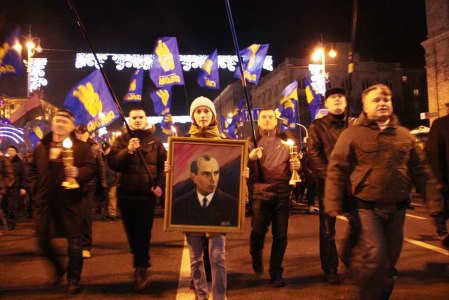

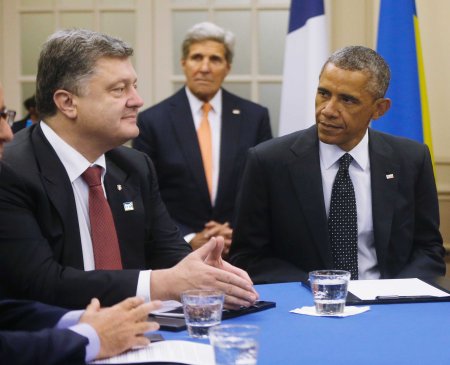

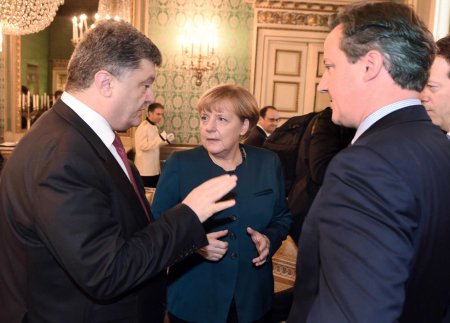
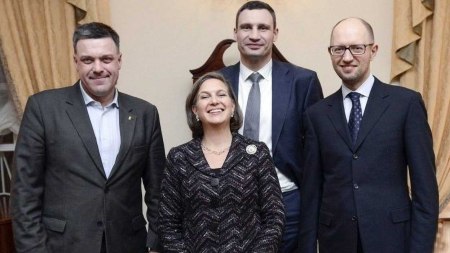
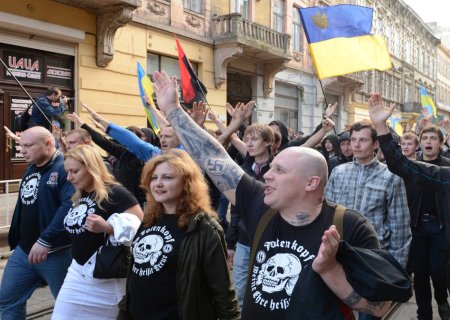
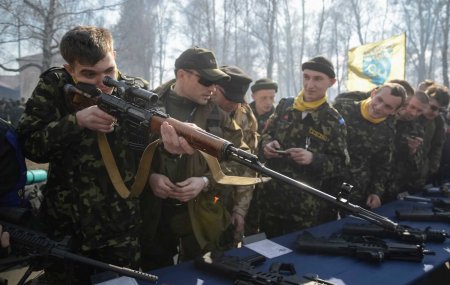
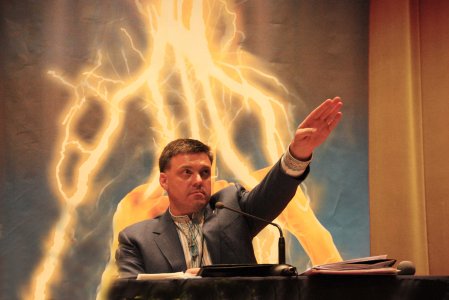
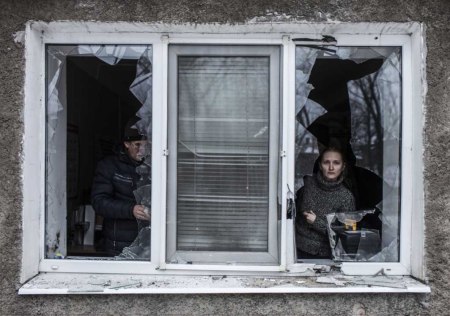

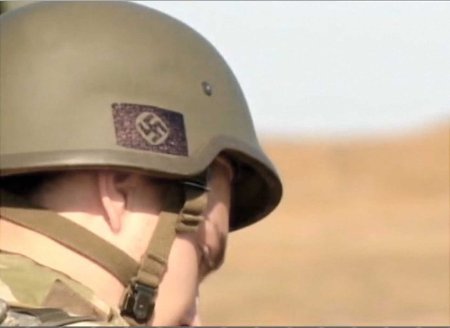

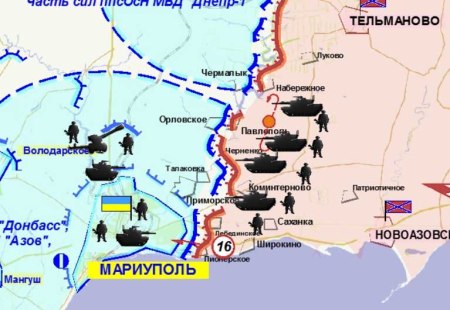


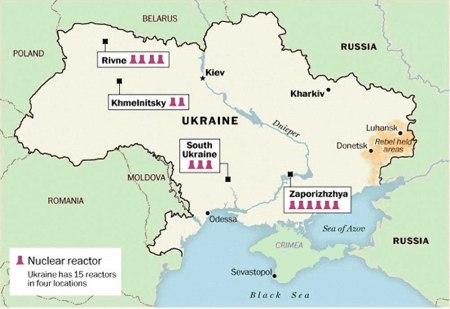


[…] Further reading: There is no meltdown […]
LikeLike
[…] reading: https://mato48.com/2015/02/08/ukrainian-unknowns-and-uncertainties-part-1/ https://mato48.com/2015/01/25/there-is-no-meltdown/ https://mato48.com/2015/01/20/a-new-phase-in-the-ukrainian-war/ […]
LikeLike
[…] and False Politicians Report from a war zone Ukrainian unknowns and uncertainties Part 2 There is no meltdown Shattered Dreams of Victory […]
LikeLike
[…] https://mato48.com/2015/02/18/ukrainian-unknowns-and-uncertainties-part-2/ https://mato48.com/2015/01/25/there-is-no-meltdown/ https://mato48.com/2014/11/23/shattered-dreams-of-victory-and-prosperity/ […]
LikeLike
[…] https://mato48.com/2015/02/18/ukrainian-unknowns-and-uncertainties-part-2/ https://mato48.com/2015/01/25/there-is-no-meltdown/ https://mato48.com/2014/11/23/shattered-dreams-of-victory-and-prosperity/ […]
LikeLike
[…] https://mato48.com/2015/02/08/ukrainian-unknowns-and-uncertainties-part-1/ https://mato48.com/2015/01/25/there-is-no-meltdown/ https://mato48.com/2015/01/20/a-new-phase-in-the-ukrainian-war/ […]
LikeLike